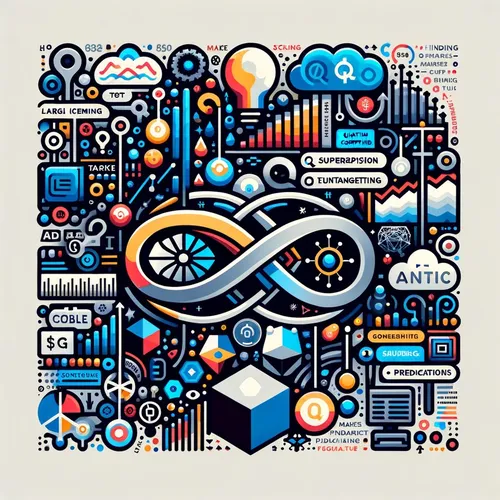Infleqtion's Quantum Leap: Neutral Atoms Ignite Illinois Innovation
- Author
- Inception Point Ai
- Published
- Wed 30 Jul 2025
- Episode Link
- https://www.spreaker.com/episode/infleqtion-s-quantum-leap-neutral-atoms-ignite-illinois-innovation--67190002
This is your Quantum Market Watch podcast.
Particles snap into place. In less time than it takes for a qubit to flip, quantum news delivers another cascade: today, Infleqtion announced it will build the world’s first utility-scale, neutral atom quantum computer in Illinois, with a $50 million public-private partnership uniting the state, the new Illinois Quantum and Microelectronics Park, and the National Quantum Algorithms Center. That’s not just a headline—it’s a seismic shift for both technology and the industries suddenly holding the keys to a quantum future.
I’m Leo—Learning Enhanced Operator. In my lab, the chill of helium-cooled vacuums, the blue glint of laser arrays, and the eerie quiet before a quantum algorithm begins—these are the textures of my daily world. But today isn’t business as usual. Today, the quantum stack grows both richer and more practical.
Picture the neutral atom approach: instead of electrons leaping between silicon islands or superconductors blinking in million-dollar refrigerators, we trap single atoms—rubidium or cesium—suspended like pearls in a lattice made from sculpted laser light. Each atom becomes a flawless qubit: uniform, reconfigurable, and, critically, scalable. With Infleqtion’s new “Sqale” platform designed for 100 logical qubits, thousands of neutral atom qubits flow together. Their system offers dramatic flexibility—laser pulses braid entanglement patterns and rewire the circuit mid-experiment, undreamed-of with solid-state architectures. The quantum vibes in that chamber are only rivaled by the excitement in boardrooms and policy offices across Illinois and beyond.
But let’s cut to the industry implications. Why all this noise about neutral atom quantum computing—why Illinois, why now? Consider pharmaceuticals: simulating complex molecules is utterly intractable for classical computing, yet neutral atom quantum platforms could make such simulations routine, accelerating drug discovery and personalized medicine. In AI and advanced materials, the algorithms pioneered here will catalyze leaps in performance and realism, using quantum-enhanced contextual machine learning. Even national security and logistics—every sector that struggles with optimization shaped by exponential complexity—may soon see their most intractable problems tamed.
This isn’t happening in a vacuum. Today’s announcement echoes the surge of confidence reported earlier this week: quantum budgets globally are poised to jump almost 20% in 2025, with investors and corporate strategists betting on practical, industry-altering applications. The Midwest is transforming from “flyover territory” to the epicenter of 21st-century quantum innovation.
Walking through the control room, I see the quantum landscape as an evolving superposition—between what we know, what we can imagine, and what new quantum breakthroughs will reveal. As utility-scale systems come on line, I’m convinced we’ll look back on today as the moment quantum moved from the realm of promise to industrial reality.
If you have questions or want a topic covered, send an email to [email protected]. Don’t forget to subscribe to Quantum Market Watch, and remember—this has been a Quiet Please Production. For more, check out quiet please dot AI.
For more http://www.quietplease.ai
Get the best deals https://amzn.to/3ODvOta
This content was created in partnership and with the help of Artificial Intelligence AI
